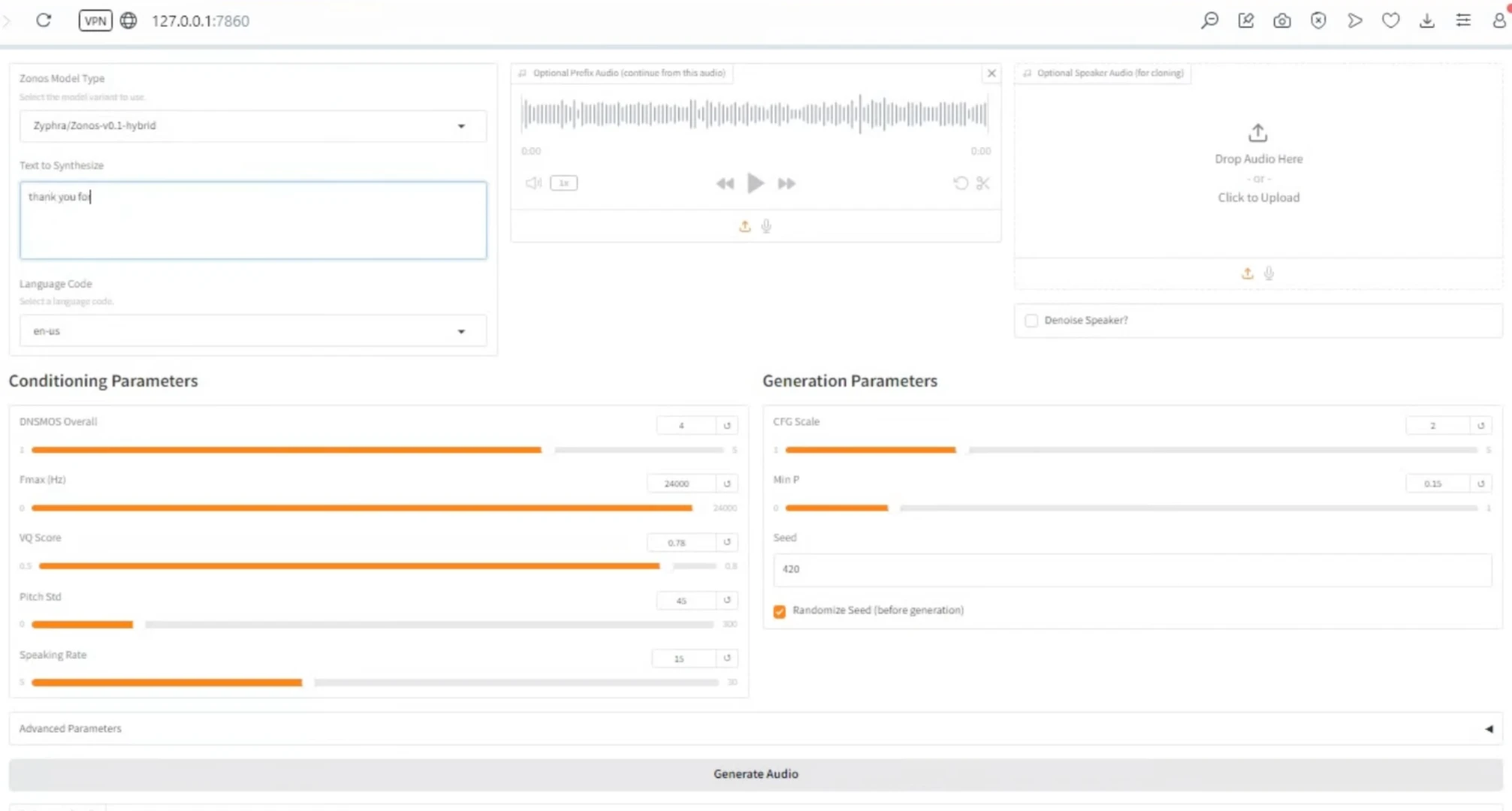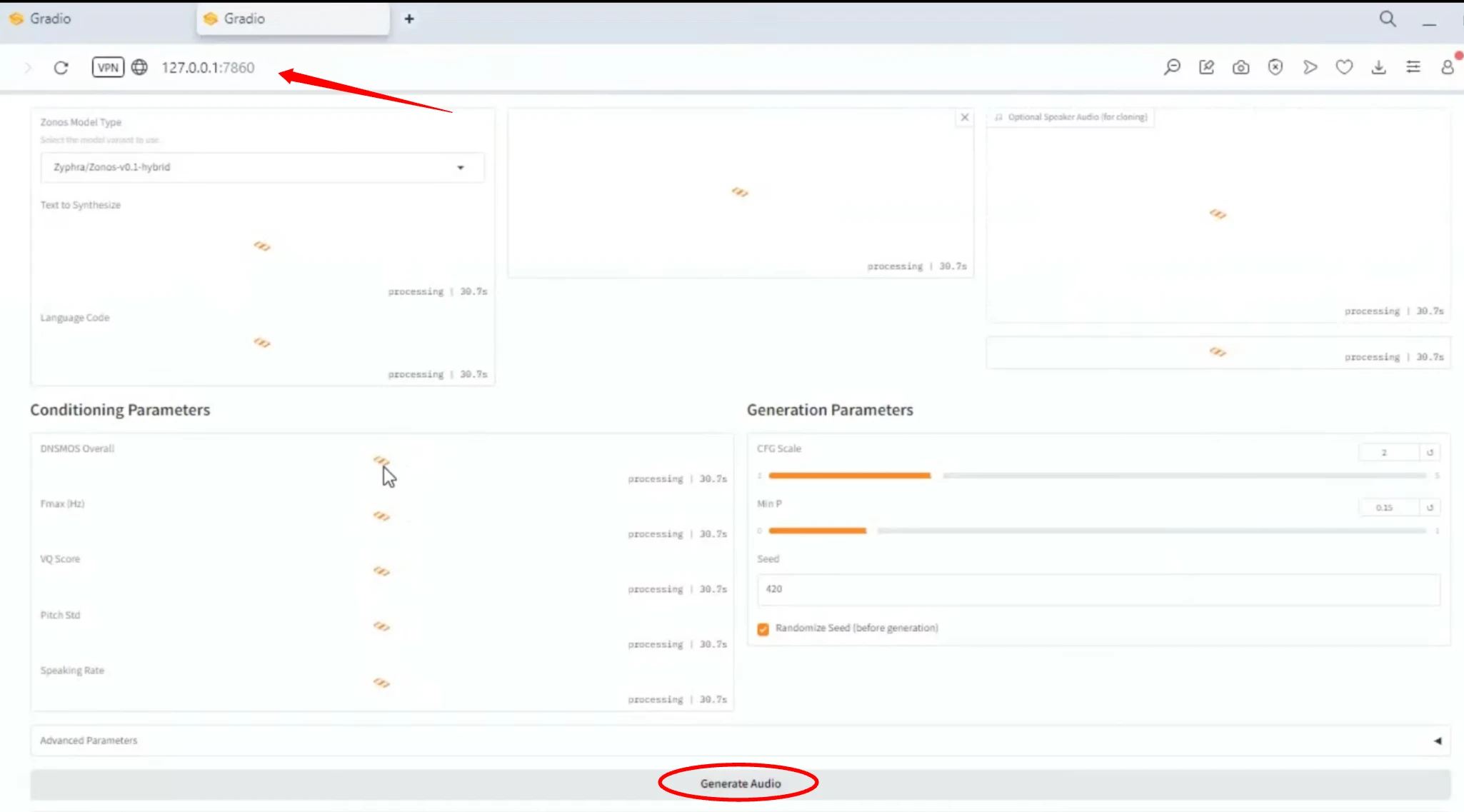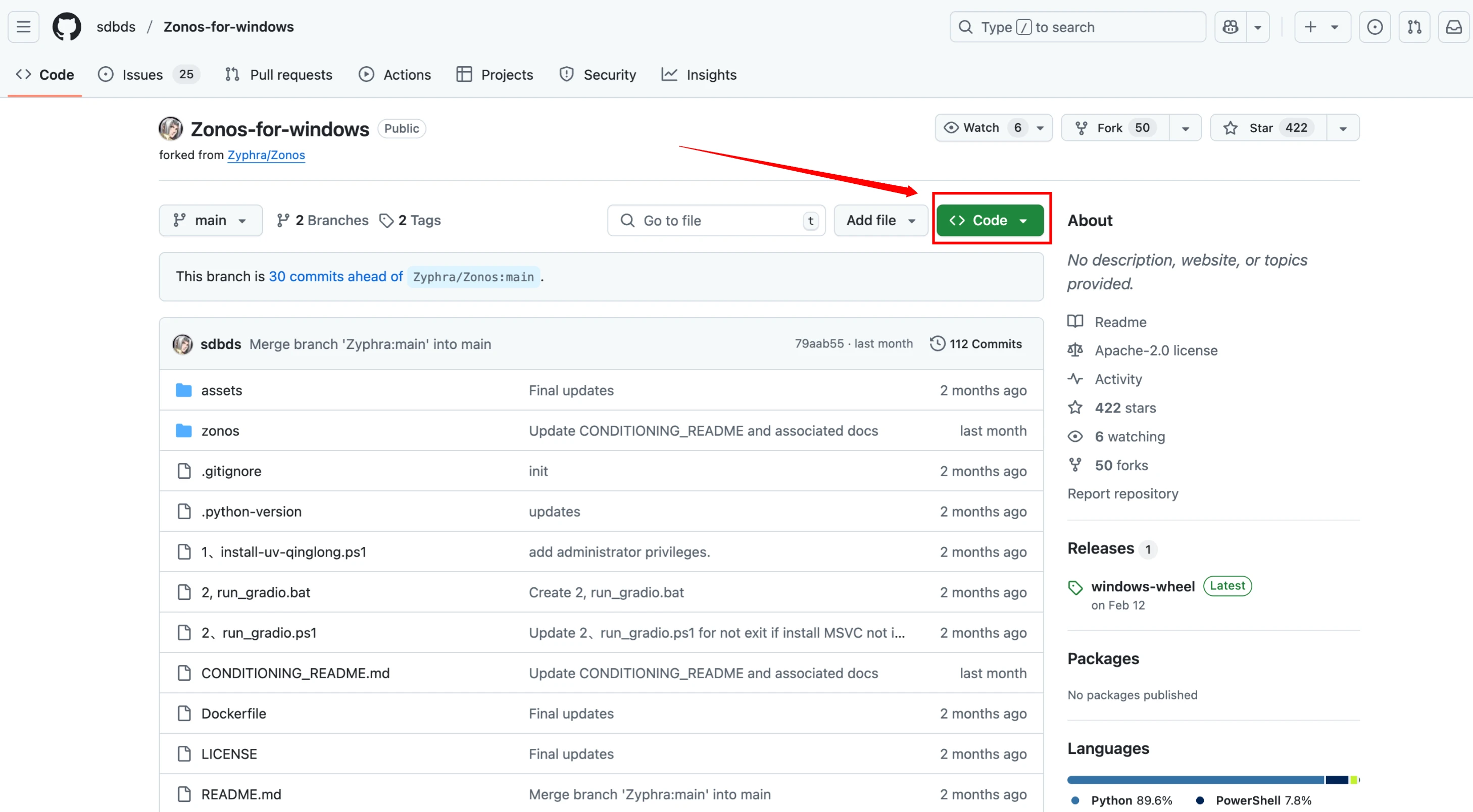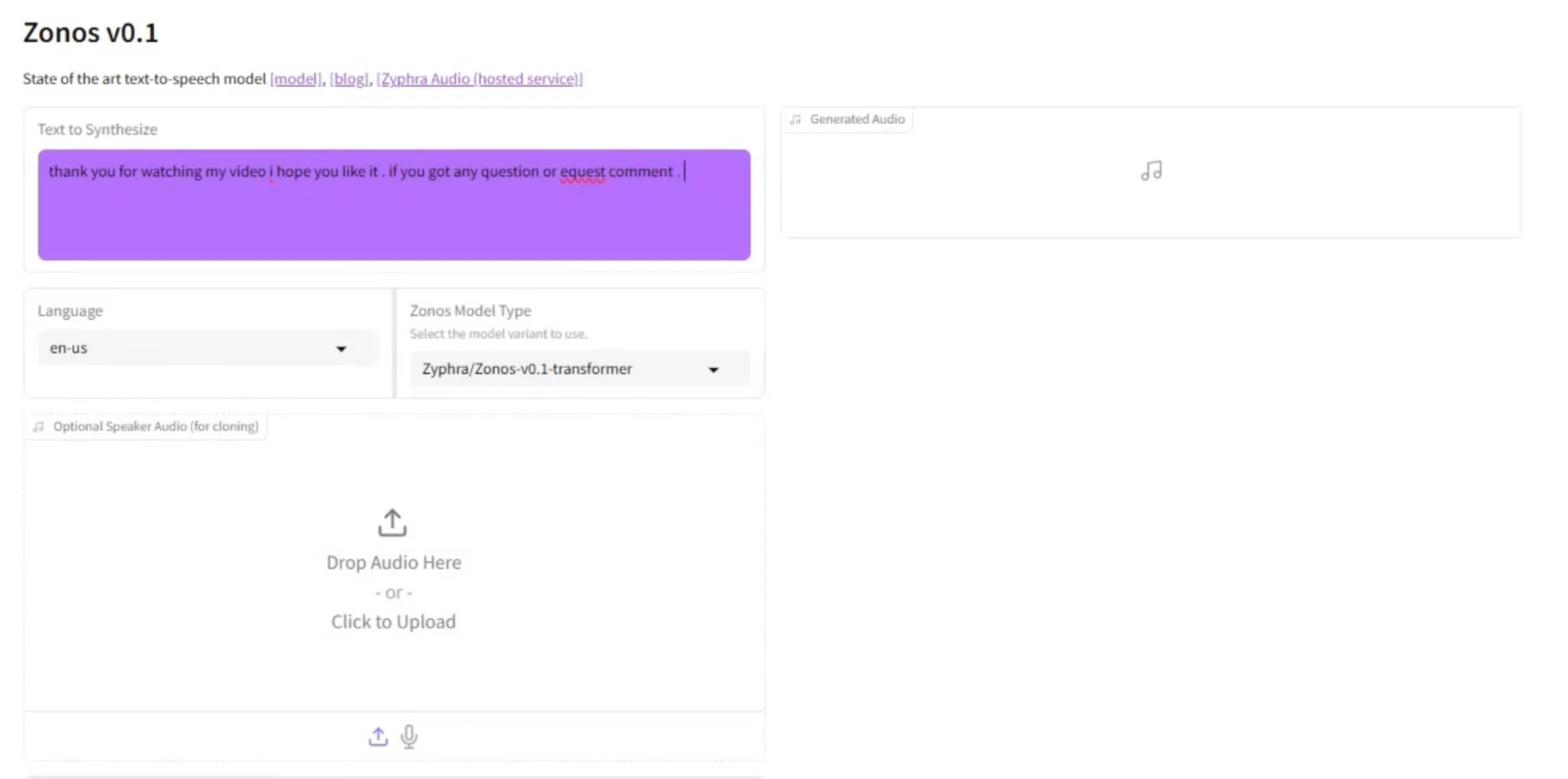Zonos TTS: Voice Cloning Step by Step

Today, I’m walking you through an amazing tool that I recently explored — Zonos TTS v1. This is a multi-language voice cloning and text-to-speech tool that allows you to create highly expressive and natural-sounding voiceovers in over 30 languages.
You can not only clone voices across different languages, but also adjust emotions and expressions to suit your text. In this article, I’ll guide you step-by-step on how to install, set up, and use Zonos TTS v1.
What is Zonos TTS v1?
Zonos TTS v1 is a text-to-speech and voice cloning tool that supports more than 30 global languages. It’s designed for those who want to create voiceovers in different languages and tones, making it great for content creators, developers, and multilingual projects.

It’s not just about converting text to speech — with Zonos, you can clone voices in multiple languages, add emotional expressions, generate speech from any text, and run everything locally on Windows with GPU support.
Zonos TTS: At a Glance
| Feature | Description |
|---|---|
| Voice Cloning | Clone voices in 30+ languages |
| Emotions & Expressions | Adjust tone to match context |
| Platform | Windows (Local Installation) |
| GPU Requirement | NVIDIA 3060 RTX (minimum) |
| Toolkit Requirements | Cuda Toolkit 12.4, FFMPEG, Visual Studio |
| Installation Method | GitHub + PowerShell |
| Interface | Gradio (web-based UI) |
System Requirements
Before jumping into the installation, make sure your system meets the minimum requirements:
- GPU: NVIDIA RTX 3060 or higher (minimum 6GB VRAM)
- CUDA Toolkit: Version 12.4
- FFmpeg: Installed and set up
- Visual Studio: Required for building dependencies
- Operating System: Windows
If your system doesn't meet these specs, you can still try out the Hugging Face demo version online.
How to Install Zonos TTS v1 on Windows
- Step 1: Download Zonos from GitHub
Go to the GitHub page: github.com/sdbds/Zonos-for-windows and click on the green Code button, then choose Download ZIP. - Step 2: Extract the ZIP File
Once downloaded, extract the ZIP file to any folder on your computer where you want Zonos to be installed. - Step 3: Open PowerShell as Administrator
Search for PowerShell in your Start Menu, right-click and select Run as Administrator. - Step 4: Copy PowerShell Installation Code
Go back to the GitHub page, scroll to the Windows installation section, copy the given PowerShell script, and paste it into your PowerShell window. Select option A (Capital A) when prompted and press Enter. - Step 5: Run the Installer File
After that process finishes, go to the main Zonos folder, right-click on the install file, and select Open with PowerShell. This will install all required dependencies. Wait until you see a message that says Installation Finished. - Step 6: Launch Zonos TTS
In the same folder, find the file called run_gradio, right-click and choose Open with PowerShell. This will launch Zonos and also download required models. - Step 7: Open Zonos in Your Browser
Once the models are downloaded, Zonos will automatically launch in your default web browser. If you close it and want to run it again, just go to the main folder, right-click on run_gradio_pw1, and select Open with PowerShell to relaunch.


How to Use Zonos TTS v1
Using Zonos is pretty straightforward. Here’s how you can generate speech:
- Step 1: Choose a Model
Once the interface opens in your browser, select the model you'd like to use. - Step 2: Enter Text
Type the text you want to convert into speech. - Step 3: Select Language
Choose from 30 available languages including English, Spanish, Hindi, French, Japanese, and more. - Step 4: Choose Expression/Emotion
You can modify how the speech sounds: Happy, Sad, Angry, Excited, Calm. Select the emotion that best fits your text. - Step 5: Generate Speech
Click the Generate button. Depending on your GPU, it may take a minute.
If you have a low-end GPU, you may run into memory issues. In my case, I got a CUDA Out of Memory error.
Limitations and Suggestions
While Zonos TTS v1 is powerful, there are a few things to note:
- No System Requirements: The GitHub page doesn’t mention exact GPU requirements.
- Heavy on Resources: You may need expensive GPUs or cloud credits to run it.
- Limited Public Access: The Hugging Face demo isn’t always available due to GPU caps.
Suggestion: The developers should consider adding minimum system requirements in their documentation.
Running into GPU Issues?
If you’re using a GPU with less than 6GB VRAM (like mine), here’s what you can do:
Option 1: Use the Hugging Face Demo
Go to the Zonos demo on Hugging Face.
- Upload your text.
- Choose the language and emotion.
- Generate audio online without running it locally.
This way, you still get to test how the voice cloning and emotion adjustment features work.
Option 2: Use a Cloud GPU
If you’re comfortable working in the cloud, you can:
- Rent a GPU-powered server from services like Google Colab Pro, RunPod, or Paperspace.
- Install Zonos following the same steps, adjusted for Linux.
Final Thoughts
Zonos TTS v1 is an impressive tool for creating voiceovers that sound natural and expressive, making it ideal for various applications in content creation and multilingual projects.